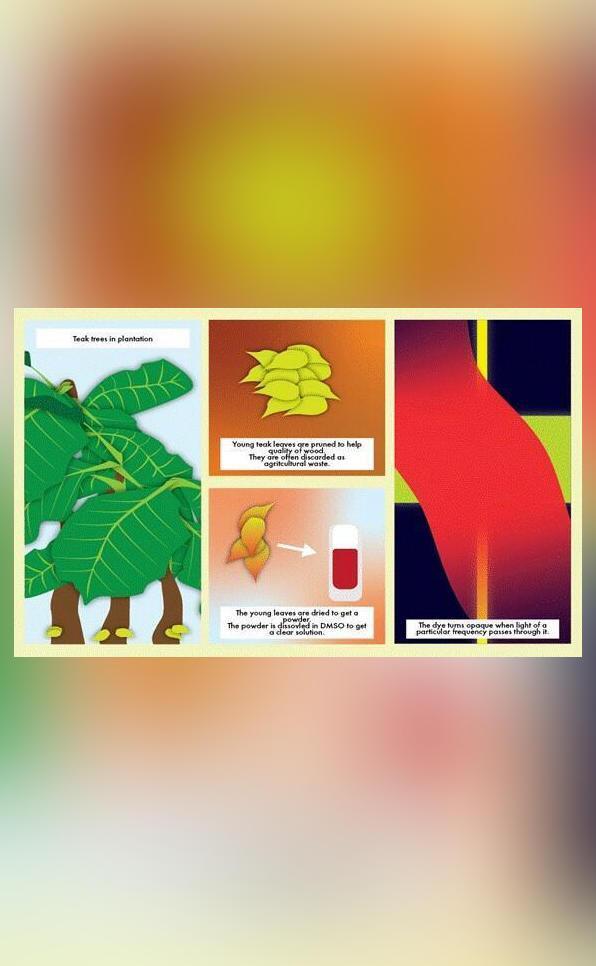
Teak Leaves Can Be Used as Natural Laser Shields, Indian Scientists Find
In a breakthrough discovery, Indian scientists have found that teak leaf extract can protect eyes from high-power laser radiation used in medical and military devices. The researchers have identified the anthocyanin pigments present in teak leaves as having nonlinear optical (NLO) properties, making them suitable for optical power-limiting applications. This innovative finding could pave the way for the development of modern, eco-friendly laser protective equipment such as safety goggles.
Laser technology has revolutionized various fields, including medicine, military, and industrial applications. However, the high-power radiation emitted by these devices poses a significant risk to human eyesight. In recent years, there has been a growing need for effective and eco-friendly laser shields to protect individuals from the harmful effects of laser radiation. The conventional methods of laser protection, which involve the use of synthetic materials, have raised concerns about environmental sustainability and human health.
In light of these concerns, a team of scientists from the Indian Institute of Science (IISc) has turned to nature for a solution. Led by Dr. Rameshwar Sharma, the researchers have been studying the properties of teak leaves, which are rich in anthocyanin pigments. These pigments are known for their antioxidant and anti-inflammatory properties, but the team has discovered that they also possess nonlinear optical properties.
The researchers used a combination of spectroscopic and microscopic techniques to analyze the teak leaf extract. They found that the anthocyanin pigments exhibited a nonlinear response to laser radiation, which means that they can absorb and scatter high-power laser light. This property makes them ideal for optical power-limiting applications, such as laser protective equipment.
The team’s findings, published in the journal Optics Express, have significant implications for the development of eco-friendly laser shields. The use of teak leaf extract as a natural laser shield could reduce the environmental impact of laser technology and minimize the risk of eye damage associated with high-power laser radiation.
The researchers are already exploring ways to scale up the production of teak leaf extract for commercial use. They are also working to develop new technologies that can harness the nonlinear optical properties of anthocyanin pigments. These advancements could lead to the creation of innovative laser protective equipment, such as safety goggles and shields, that are not only effective but also sustainable and environmentally friendly.
The discovery of natural laser shields is not only a breakthrough in the field of optics but also highlights the importance of interdisciplinary research. The collaboration between botany, chemistry, and physics has led to a novel solution that could have far-reaching implications for various industries and applications.
In conclusion, the finding that teak leaves can be used as natural laser shields is a significant breakthrough that could pave the way for the development of modern, eco-friendly laser protective equipment. The use of natural materials, such as teak leaf extract, could reduce the environmental impact of laser technology and minimize the risk of eye damage associated with high-power laser radiation. As researchers continue to explore the properties of anthocyanin pigments, we can expect to see innovative applications of this technology in the future.






